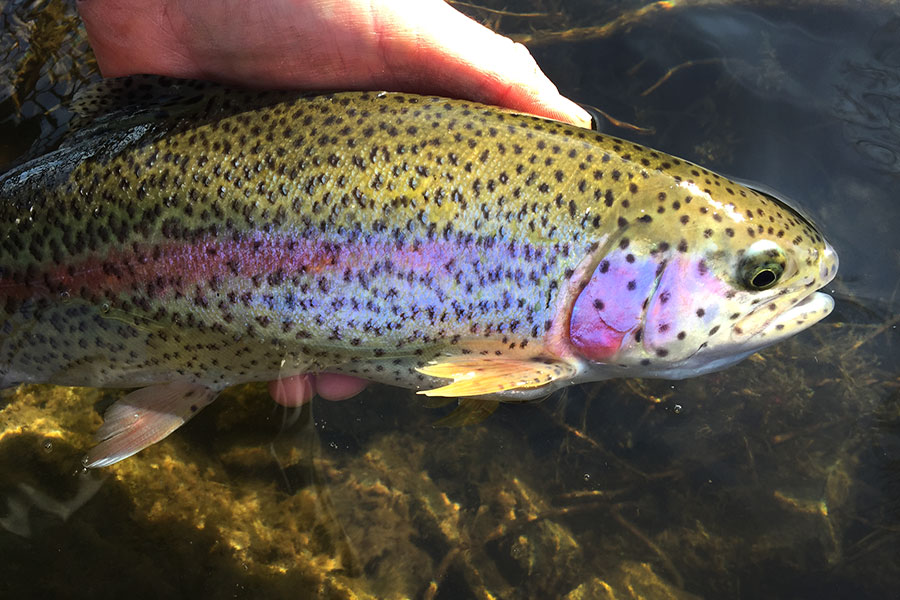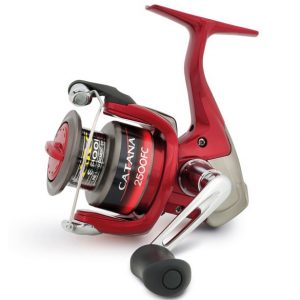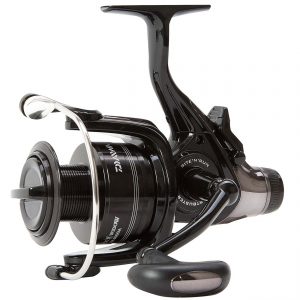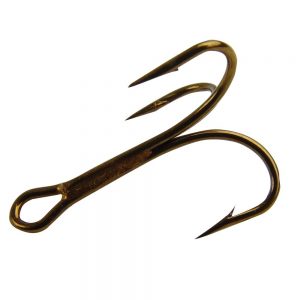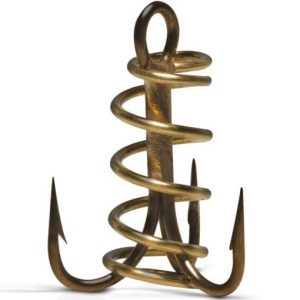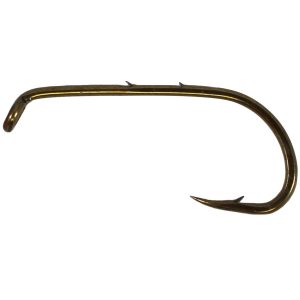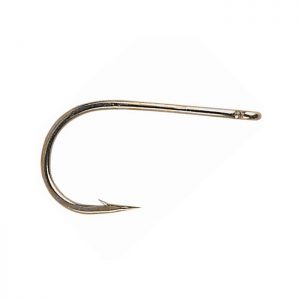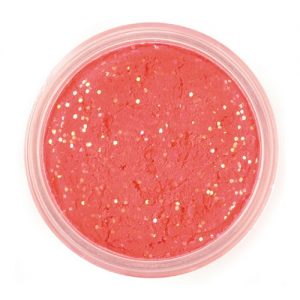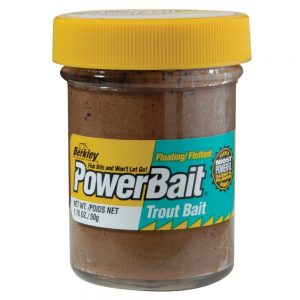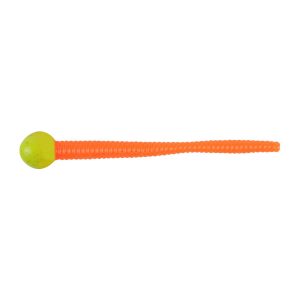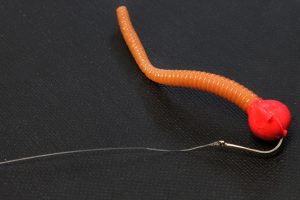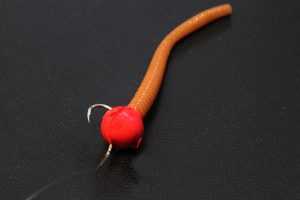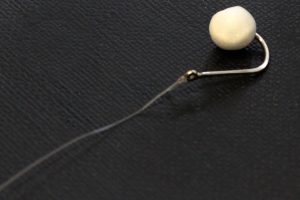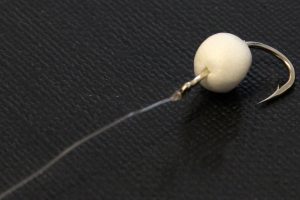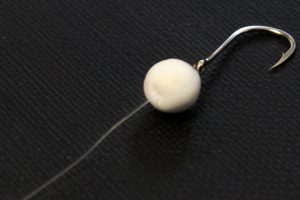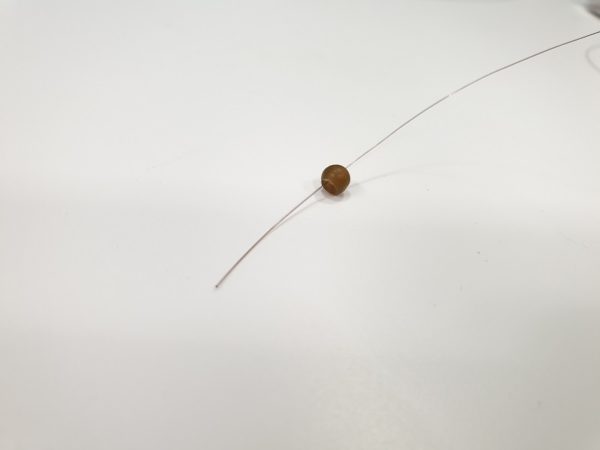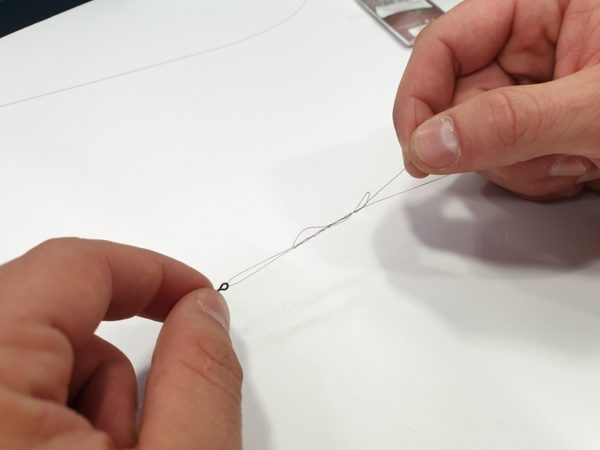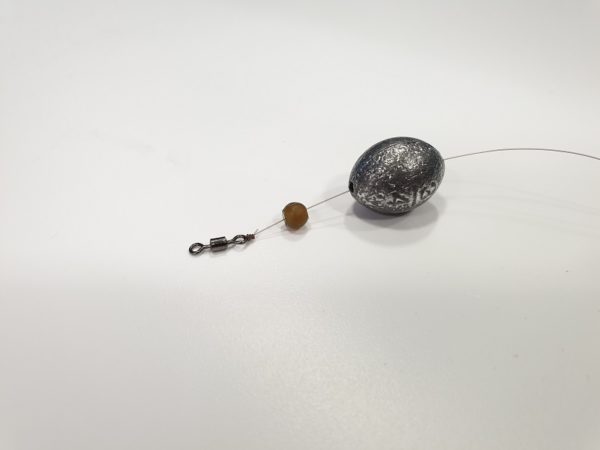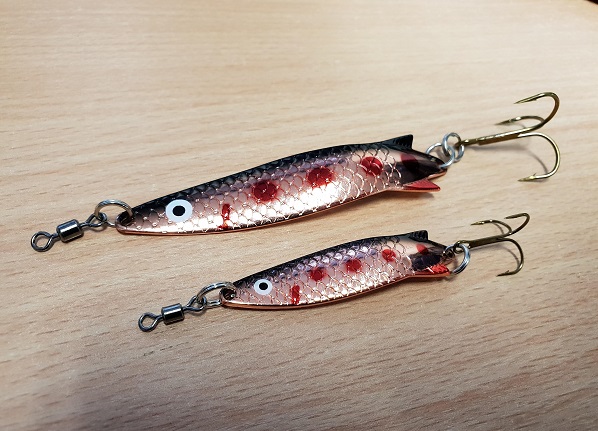Bait Fishing For Trout
The majority of anglers start their fishing years, bait fishing for rainbow trout on a trout fishery. Providing us with the basics in angling knowledge, it’s the first steps to progressing our angling careers. This article, will cover off what you require to get started and how to rig up for these fun and aggressive species.

So why rainbow trout?
Is the first question we usually get asked!
Rainbow trout are a species of salmonid usually found in tributaries in North America. They have a reputation for being a hard fighting fish and for this reason they were introduced to trout fisheries around the UK and are now one of the most targeted game species in UK inland waters.
So what fishing tackle do I need?
Below we will take an in-depth look at what tackle you require to get started. We will cover everything from rods, reels, rigs and terminal tackle.
Rods
When it comes to choosing the right rod for trout bait fishing, we recommend a spinning rod with a casting weight between 10 – 40 grams and 8-9′ in length. This seems to be a good all-rounder that will cover both bait fishing and lure fishing applications. A rod with a progressive/ medium action is recommended, this will stop the hooks pulling out of the soft mouth of a trout and it will also provide some absorption when casting artificial baits like Powerbait, ensuring the bait does not fall off the hook during the cast.

A Spinning Rod With A Casting Weight Of 10 – 40 grams Is Ideal
Click here to view our full range of spinning rods!
Reels
The perfect sized reel for trout fishing is a spinning reel between 2500 – 3000 in size. This will hold enough line, while still being light enough in hand if you decide to lure fish. Another option is a free spool style reel. The majority of trout bait anglers prefer a free spool style reel as they contain a second clutch which is activated by a lever, usually located at the rear of the reel. This allows the trout to take your bait and swim off, allowing the fish to take line from the spool freely while still under a pre-set tension. This eliminates the possibility of a trout dragging your rod and reel into the water. To disengage the free spool facility, a simple half turn of the reel handle will do it, this then allows you to continue the fight via the primary clutch/drag system.
- A 2500 or 3000 Sized Spinning Reel Is Ideal For Trout Bait Fishing Or Spinning
- A Free Spool Reel Offers A Secondary Clutch System Allowing Fish To Run With The Bait
Click here to view our full range of spinning reels!
Terminal Tackle
Line
The most commonly used line for trout bait fishing is monofilament, with breaking strains between 6-8lb. These lines provide enough strength to deal with both ledgering and lure fishing tactics. While still light enough to make the fight enjoyable.

Monofilament Line In 6 – 8lb Breaking Strain Is Recommended
Weights
Inline bullet leads between 20 grams to an ounce in weight are the favoured lead type for trout fishing. These leads are ideal for beginners as they reduce the chances of tangles during the cast as they provide a more streamlined rig presentation. We do recommend, increasing or decreasing the weight of your lead depending on conditions. E.g. Windy conditions, use a slightly heavier lead so your rig stays anchored to the bottom.
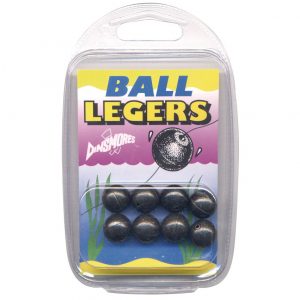
Inline Bullet/Ball Leger Leads Are The Most Commonly Used Weights For Trout Bait Fishing
Hooks
There are two styles of hooks used in trout bait fishing, we recommend both as they allow you to fish different baits with different presentations.
Treble hooks
The treble hook comes with three hook points that are welded to the shank of the hook. A very common hook used in conjunction with Powerbait. The bait is moulded around the hook, ensuring a better hold than a single hook can offer. Our recommended treble hook is a trout dough treble, this has a spring, locked into the shank of the treble. These are specifically designed to provide an extremely good bait hold, ensuring the bait does not come off on the impact of it hitting the water during the cast.
Hook sizes: 12 and 14 are most commonly used.
- A Standard Looking Treble Hook
- Spring Locked Trout Dough Treble Provides A Better Bait Hold For Powerbait
Single hooks
Single hooks consist of one hook point, this style of hook is ideal for fishing a variety of baits. Most commonly used for maggots, worms and mice tails. Sizes will vary from brand to brand, it is also worth noting that maggot hooks differ from worm hooks not just in size but in appearance. The most commonly used worm hooks will have 2 barbs on the rear of the shank to hold the worm in place.
- Maggot hook: Sizes 10, 12 and 14
- Worm hook: Sizes 10, 12 and 14
- Mice tails (maggot hook): Size 10 and 12
- Worm Hook – Notice The Two Barbs On The Back Of The Shank To Hold The Worm In Place
- Maggot Hooks Are Significantly Smaller Than Worm Hooks
Swivels
Swivels are used as a connection between lines. For example Monofilament main lines and fluorocarbon hook lengths. The other main feature of a swivel is to reduce line twist. Line twist can occur on most monofilament and fluorocarbon lines during casting, retrieving and playing fish. We highly recommend using swivels when creating trout ledgering rigs, so you don’t experience any unwanted tangles on the bank.
Swivel Sizes: 8 and 10
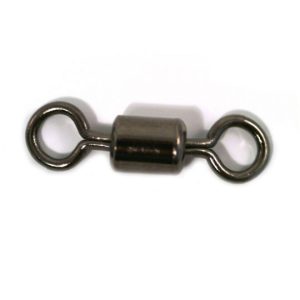
A Swivel Not Only Provides A Connection Between Lines, It Also Minimises Line Twist
Hooklength
A fluorocarbon hook length is used when ledgering. Fluorocarbon is a line that has low visibility properties which helps when presenting your bait. The hook length is usually a lighter breaking strain than your mainline. For example: If we use 8lb main line, then we would use a 6lb hook length. This provides a more finesse bait presentation but it also means if you become snagged or lose a fish during the fight due to the line breaking, you do not lose your whole rig. (We will explain and show this in the diagram for rigs, later in the article)
Bait
Powerbait
A mouldable putty that comes scented and flavoured. This long shelf life artificial bait comes in various colours giving you a bait that stands out in the water, while its floating properties and longevity on the hook compared to live bait such as worms and maggots, has made it a modern day classic trout bait.
- Powerbait Comes In A Variety Of Colours
- Powerbait Is An Artificial Bait That Has Become A Classic Among Trout Fisheries
How to fish with Powerbait:
Take a bit of Powerbait, ensure its slightly bigger than the treble hook. Roll the Powerbait between your palms until it becomes ball-shaped. Make sure that all creases are removed during the rolling process as this will eliminate water ingress which will stop the bait removing itself from the hook during the cast. Push the Powerbait from the bottom of the treble up over the remaining part of the hook. Ensure the hook is fully covered. Mould the ball to close any creases that may still be remaining.
Mice tails
Another very popular choice for trout anglers. Mice tails are designed to imitate a salmon egg and worm combined. Coming with different head and tail colours to provide maximum contrast in the water. These floating baits have taken rainbow trout fisheries by storm. The floating bait provides an enticing tail action in the current. They are also scented to provide further attractant.
How to fish with mice tails:
Take the mouse tail and thread the hook through the front of the egg of the mouse tail and feed the hook point out the bottom of the egg (diagram 1). So the egg of the mouse tail is sitting on the shank of a single hook. This allows the tail to move freely and create an enticing action in the water (diagram 2).
- Diagram 1
- Diagram 2
Maggots
A classic bait fished in conjunction with a poly ball/suspender ball. So your bait is buoyant and floats up from the bottom of the loch. Maggots come in various colours and with the added movement of a natural livebait. It can be a deadly bait to use on the right days.
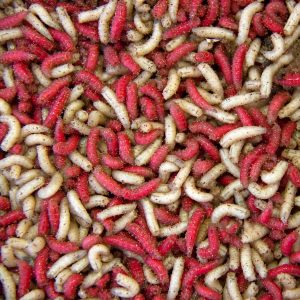
Mixed Maggots
How to fish with maggots:
To fish maggots up off the bottom, so your bait is more visible to passing fish. Take a poly ball/suspender ball and thread it onto a single hook and push it up over the eyelet of the hook. Then hook 3 to 4 maggots on the hooks, ensuring the back end of the maggots are hooked. The poly ball adds buoyancy while the maggots provide enticing movement.
- Step 1
- Step 2
- Step 3
Worms
Dendrobaenas are a favourite amongst trout bait anglers. A natural bait that offers plenty movement and scent in the water. Most trout can’t resist a juicy worm.

Dendrobaena Worms
How to fish with worms:
Take the worm and feed the hook point through the one end of the worm. Push the worm up the shank of the hook ensuring the work comes across both barbs on the back of the shank. Then thread the middle of the worm through the hook point and push up onto the shank. Allow the remaining part of the worm to hang loosely to provide movement.
Rigs

Ledger Rig
Ledgering is the name giving to bait fishing when the bait is anchored on the bottom. To set up a ledger rig for trout fishing you will require all of the above terminal tackle. So how does the rig go together?
1. Thread your inline lead onto your mainline, followed by a rubber bead (this is to protect the knot from the lead when it slides down the line)
2. Tie a swivel onto your mainline, this stops the lead from sliding down to your hook and also provides the connection required for your hook length.
3. Take 20 – 24 inches of fluorocarbon/monofilament and tie one end to your swivel. This will be the start of your hook length.
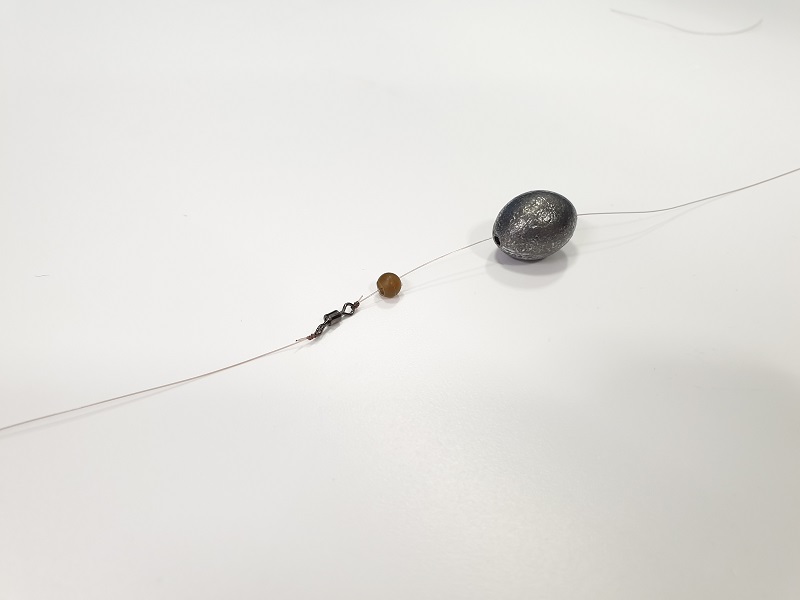
4. On the other end of your fluorocarbon/monofilament you will now attach your hook of choice. (depending on what bait you are fishing with)
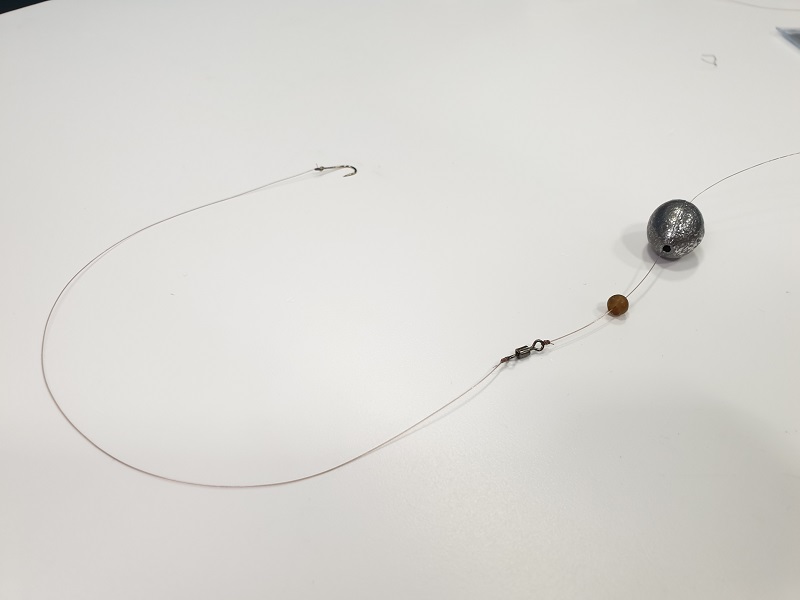
Bubble float
The bubble float allows you to fish the upper layers of the water. The float is made of plastic and is fluorescent in colour so it can be seen easily. It has two drainage holes that can be opened up and filled with water to help aid casting distance. Fishing a float is an exciting visual way to fish. So how does the rig go together?
1. Thread a float stop onto your line, this allows you to set the depth the float will fish at.
2. Thread the bubble float on behind the float stop, ensuring the line runs through both eyelets of the float.
3. Once the bubble float has been threaded on the line, tie a swivel onto the mainline. This stops the float from sliding down the hook length and it also minimises line twist.
4. After the swivel has been attached, tie a length of fluorocarbon to the swivel, this will be the hook length.
5. Once the fluorocarbon hook length has been tied to the swivel, tie your hook to the other end. The hook length can vary in length depending on how deep you want to fish your bait.
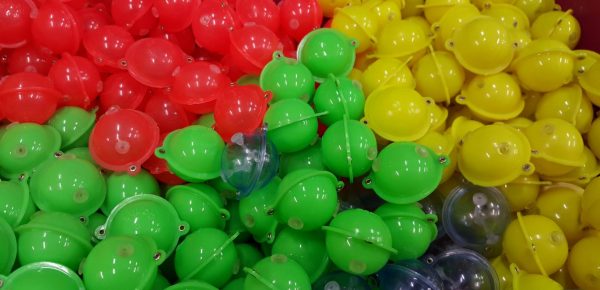
Bubble Floats Come In A Variety Of Colours. This Is Ideal For Varying Light Conditions
Banksticks
These sticks support your rod and keep it up off the ground. Ensuring you don’t damage your rod on the surrounding terrain on the bankside. They are also beneficial when using a freespool reel, as the line is not obstructed by anything when supported by banksticks.

Banksticks Provide Rod Support
Now you have a basic knowledge of all the tackle and rigs required to start trout bait fishing. For any more information regarding trout bait fishing. Please feel free to contact the AA team, we are happy to help.

